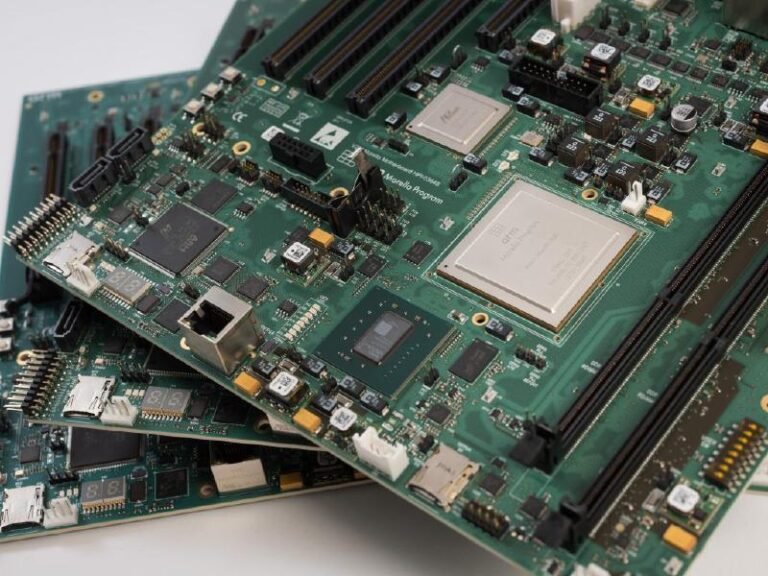Architecture to Project Management
Transitioning from architecture to project management is a strategic career shift. It merges design principles with leadership skills for successful project delivery.
Embarking on a journey from the realm of architecture to the dynamic field of project management represents a significant yet rewarding pivot. Architects, renowned for their design acumen and attention to detail, are uniquely equipped to excel in project management roles.
They bring a keen eye for aesthetics combined with a systematic approach to overseeing projects from inception to completion. This transition requires adapting to a broader scope of responsibilities, including budgeting, scheduling, and team coordination. Architects moving into project management can leverage their problem-solving skills and technical knowledge to ensure projects meet client expectations, stay within budget, and are completed on time. The synergy between architectural expertise and project management proficiency enhances the ability to create, plan, and execute projects with precision and flair. This switch not only diversifies an architect’s skill set but also opens up new avenues for professional growth and opportunities in various sectors.
The Evolution From Architecture To Project Management
The jump from architecture to project management seems huge. Yet, it’s not. Design thinking helps architects and project managers alike. Both roles need strong communication skills. Problem-solving is key in both fields. Managing time and resources is a must. Architects know how to do this. So do project managers. This makes moving from one field to the other smoother.
Over years, architects have become project managers. This didn’t happen overnight. It took time. Skills from architecture helped a lot. These skills are valuable in project management. Both jobs deal with creating plans and meeting deadlines. Both need teamwork. Understanding this helps us see why architects can become great project managers.
Analyzing The Architect’s Skillset
An architect’s journey from design to project management is fascinating. Design sensibility blends creativity with functionality. Technical knowledge ensures structures stand the test of time. Together, these skills create buildings that are both beautiful and resilient.
Effective client communication is crucial. It turns visions into reality. Coordination ties every team member together. Architects must listen well and articulate clearly. This ensures that every project detail is understood and executed properly.
Fundamentals Of Project Management
Understanding the fundamentals of project management is key. Scope, schedule, and budget play a major role. They help teams know what to do. They also tell teams when to do tasks. Knowing how much money is available is crucial too.
Risk analysis helps find potential problems. This step is about being ready for what might go wrong. Quality control ensures the project’s success. It checks if the work meets the needed standards.
Bridging The Gap With Certification And Training
Architects often seek to broaden their expertise into project management. One effective pathway is through obtaining a Project Management Professional (PMP) certification. This globally recognized credential demonstrates a robust understanding of project management principles and practices. To achieve it, architects must meet certain experience and education requirements, followed by passing a comprehensive exam.
Additionally, engaging in continuing education is vital for architects aiming to excel in project management. These programs help professionals stay updated with the latest industry trends, tools, and techniques. They also provide valuable PDUs (Professional Development Units) necessary for maintaining the PMP certification.
Case Studies: Architects As Project Managers
Many architects have successfully transitioned to project management roles. Their deep understanding of design and construction proves invaluable. They often face challenges such as new workflow processes and team dynamics.
Skills in communication, leadership, and strategic planning are essential. These professionals learn to manage budgets and timelines effectively. Real-world case studies show their ability to adapt and excel in their new roles.
The Role Of Technology In Shifting Careers
Technology plays a pivotal role in career transitions. Architects are leveraging software tools to become proficient project managers. Tools such as CAD (Computer-Aided Design) have evolved. Project scheduling software now aids in efficient task management.
Building Information Modeling (BIM) is revolutionizing project management. BIM provides a digital representation of physical and functional characteristics of a project. This technology enables better collaboration, communication, and efficiency.
| Software Type | Role in Project Management |
|---|---|
| CAD | Design visualization and drafting |
| Project Scheduling | Task planning and timeline tracking |
| BIM | Integrated project delivery |
Leadership And Team Dynamics
Architects often excel in project leadership. Their training hones skills for guiding teams. As project managers, they must ensure everyone’s collaboration. This team dynamics mastery is vital.
Success hinges on clear communication and setting defined goals. Architects-turned-managers use visual tools to aid understanding. Their role includes resolving conflicts and fostering a cooperative environment.
Collaborative approaches are key. These include brainstorming sessions and regular check-ins. Teams that work together well deliver successful projects.
Future Trends In Project Management
Sustainability is now a key focus in the construction industry. This trend is growing fast. Companies are working to make buildings that use less energy. They use special materials that are good for our planet. These materials are often from places close by. This helps in reducing the pollution from transport.
New technologies are also changing how buildings are made. 3D printing is one. It can create parts of buildings. This method is quick and wastes less material. Another technology is smart glass. It can change how see-through it is based on the weather. This helps in keeping buildings warmer or cooler. This saves a lot of energy.
Another big change is using solar panels. Many new buildings have these. They capture sunlight and turn it into electricity. This means the building can produce its own clean energy.
Conclusion
Embarking on a career shift from architecture to project management can be a transformative journey. With the right skill set and a strategic approach, such a transition offers a realm of new possibilities. Embrace the change, leverage your design expertise, and thrive in the dynamic world of project management.
Your future in leading successful projects awaits.





